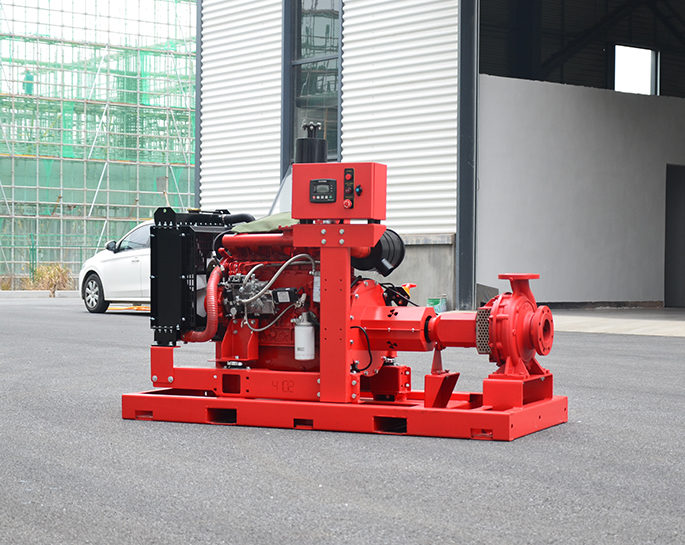What is the difference between a fire pump and a normal pump?
Oct 29, 2024
Share:
Fire pumps and regular pumps both move water, but they have distinct differences in design, purpose, and compliance requirements:

1. Purpose and Application
- Fire Pump: Specifically designed for firefighting systems, like sprinkler or standpipe systems, to deliver high-pressure water for effective fire suppression. Fire pumps are required to operate reliably under emergency conditions and are built to meet stringent safety codes.
- Normal Pump: Used in a variety of applications (e.g., HVAC systems, irrigation, industrial processes) for general water distribution without the critical need for extreme reliability under emergency situations.
2. Performance Requirements
- Fire Pump: Capable of providing high pressure and flow rates necessary for firefighting. Typically operates at full capacity during emergencies, often far exceeding the normal water supply pressure.
- Normal Pump: Generally operates at lower pressures and flow rates since it doesn’t have to meet emergency performance requirements.
3. Standards and Compliance
- Fire Pump: Must comply with specific fire safety standards, such as NFPA 20, and may require UL or FM certification to ensure reliability and performance in emergency conditions.
- Normal Pump: Does not need to meet stringent firefighting standards or certifications, and can be chosen based on general performance needs without fire safety testing.
4. Reliability and Redundancy
- Fire Pump: Must be highly reliable, with built-in features like backup power sources (e.g., diesel engines or backup generators for electric pumps). Fire pumps are often required to have additional monitoring and alarms for malfunctions.
- Normal Pump: Reliability requirements vary, depending on application, but they typically do not require backup power or fail-safes.
5. Construction and Durability
- Fire Pump: Built to withstand extreme conditions, often with corrosion-resistant materials and robust construction to ensure durability in adverse situations.
- Normal Pump: May have lighter construction and materials suitable for standard, non-emergency applications where exposure to extreme conditions is unlikely.
6. Operation and Testing
- Fire Pump: Tested regularly, often weekly or monthly, to ensure it functions properly during an emergency.
- Normal Pump: Routine maintenance is typically less intensive, as failures in non-emergency applications do not have the same critical impact on safety.
The key differences revolve around fire pumps’ critical role in life safety during emergencies, requiring rigorous standards, robust construction, and reliable performance.






